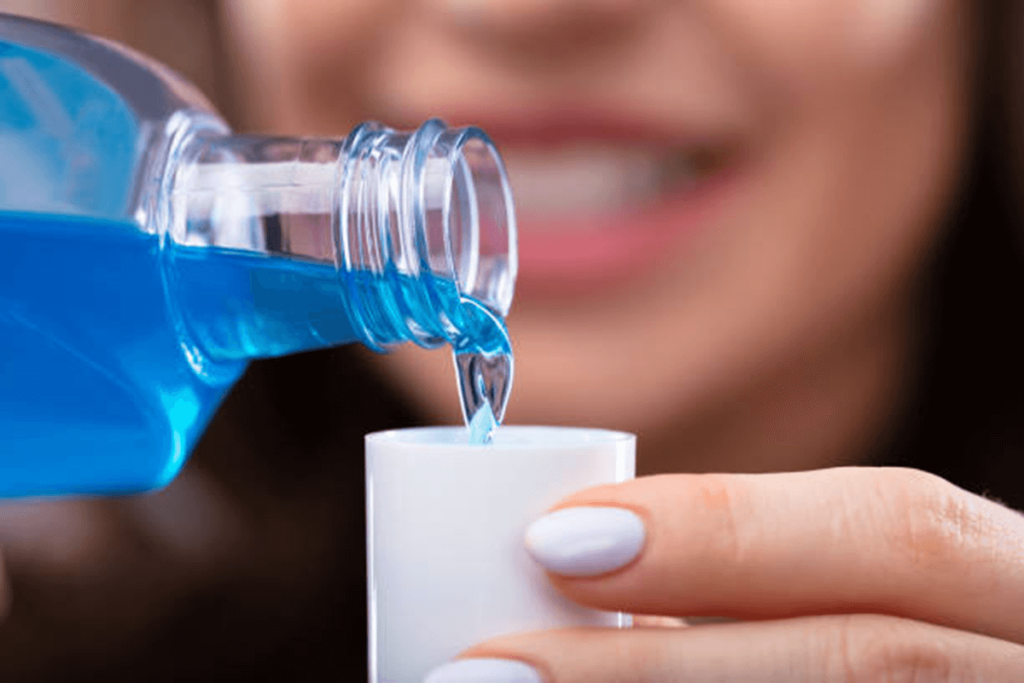Suppose you’re eating a fine meal and enjoying a drink in your hands, but you are suddenly affected by sensitivity and feel pain. You brush twice a day daily, yet the problem persists. Then you try Mouthwashes, but that doesn’t seem to work either. What seems to be the solution for that?
This is where the sodium fluoride dental rinse comes in to save the day. I’ll explain in detail what they are, how helpful and lifesaving they are, as they are proven to eliminate most teeth sensitivity, and how to use sodium fluoride dental rinses.

What Is Sodium Fluoride Dental Rinse?
Sodium and Fluoride are two naturally occurring elements that help prevent the teeth from decaying in the first place. They are used in multiple forms, such as toothpaste, gels, dentifrices, or mouthwashes! You can choose whichever method you like, but we will discuss sodium fluoride dental rinses here in this article.
Now, you might ask how some of the best sodium fluoride dental rinses contribute to healing the teeth. Well, it just so happens that the fluoride ions of the sodium fluoride chemical bind with the enamel of your tooth, forming fluorapatite, which strengthens the enamel portion of your tooth and protects your teeth from all sorts of acid and caries attacks!
Dental rinses are only recommended to patients when their normal toothpaste does not relieve their symptoms or their oral hygiene has gone downhill.

What are the Benefits of Sodium Fluoride Dental Rinse?
1. Prevention Of Tooth Decay
The fact that the primary function of these sodium fluoride dental rinses is the remineralization of enamel says a lot about its benefits. A recent study has shown that people who use sodium fluoride dental rinses have reduced dental cavities by 51%.
2. Protects Teeth During Gum Recession
If you are suffering from gingivitis, which is another word for gum recession, then the roots of your teeth may have been exposed, which do not have the same enamel protection as the rest of the tooth. Luckily, these sodium fluoride dental rinses will help offer the roots the same protection as the rest of your teeth.
3. Reduces The Sensitivity Of Your Teeth
Another benefit of sodium fluoride dental rinse is that it greatly reduces the sensitivity of your teeth by forming fluorapatite layers around them, giving them a chance to restore their health.
4. Reaches Areas Hindered By Restorations
A noteworthy advantage of these sodium fluoride dental rinses is that they cover areas of the mouth that a toothbrush cannot reach. It is also useful if you have crowns, bridges, retainers, or orthodontic braces in your mouth, as there is a chance of food debris in them, accelerating caries attacks.
How To Use Sodium Fluoride Dental Rinse?
To use sodium fluoride dental rinse effectively, consider following these steps or the ones that your dentist has prescribed for you:
- You can brush or floss your teeth before the rinses.
- Open the sodium fluoride dental rinse cap and pour 10 mL or two teaspoonfuls of the medication into the cap.
- Place the medication in your mouth and rinse around the mouth for one whole minute, after which you spit it out. Do not swallow the rinse under any circumstance.
- Do not eat, drink, or rinse your mouth for at least half an hour after using for more efficient results.
Keep in mind that there’s a possibility that the children could swallow the sodium fluoride dental rinse that you use, so call your dentist or physician immediately if this should happen to quickly reduce the chances of being poisoned. Constant supervision is essential when children are taking these medications, and children above the age of six fall into this category.

What are the Side Effects of Sodium Fluoride Dental Rinse?
When used properly and under normal directives, sodium fluoride dental rinses are safe and effective but can be hazardous when used in abnormal doses. The initial reaction to this would be fluorosis, where special spots are formed on your teeth. They are not harmful; your dentist can help you eliminate them easily.
This would be a very rare occurrence, but in the cases of an allergic reaction to sodium fluoride dental rinse, like having a rash, blisters, wheezing, tightness in the chest, trouble breathing, or even swelling of the lips, mouth, or gums, call your medical services emergency immediately and seek immediate medical attention.
If you follow the directives of your dentist, then these side effects will not occur in the first place, but in the case of any reaction, take the necessary precautionary steps described to you.
FAQs About Sodium Fluoride Dental Rinse
Q1: Should you use sodium fluoride dental rinse after using a toothbrush?
That depends on your oral health and how the dentist prescribed your sodium fluoride dental rinse medication. You can use it once or twice a day after toothbrushing; any more could cause detrimental effects instead of beneficial ones.
Q2: What happens if you miss a sodium fluoride dental rinse dose?
If you forgot to do your sodium fluoride dental rinses, use the dental rinse as soon as you think about it. If it comes next to your time, skip it and continue your normal regimen. One cautionary piece of advice is that you do not use the dental rinses twice simultaneously to make up for the extra doses.
Q3: What Is The Recommended Amount/Concentration of Sodium Fluoride Dental Rinse?
The recommended concentration of sodium fluoride dental rinse is 0.05% for all ages, but if your oral health has been compromised or if you are an elderly patient, then a 0.2% concentration of sodium fluoride dental rinse should be enough to fight back the rampant caries present in your mouth.
Q4: Can pregnant women use sodium fluoride dental rinses?
Pregnant women can only use sodium fluoride dental rinse under supervision if they are in their second or third trimester. Using sodium fluoride dental rinse during the first trimester is not allowed under any circumstances, as it would be detrimental to both the health of the mother and the baby.
Q5: Who can use sodium fluoride dental rinse?
If you are experiencing dry mouth or hypersensitivity to anything hot, cold, or even sweet, you should use sodium fluoride dental rinses. Also, if you have crowns, bridges, retainers, or even orthodontic braces, then you should do these rinses to remove any food debris in your mouth.
Conclusion
In short, sodium fluoride dental rinses are good for ensuring you have a healthy oral cavity. When used in moderation, some of the best sodium fluoride dental rinses can cure all maladies in your mouth.
For high-quality dental products and professional-grade oral care solutions, you can always turn to trusted brands like Aidite, known for its commitment to supporting oral health.



